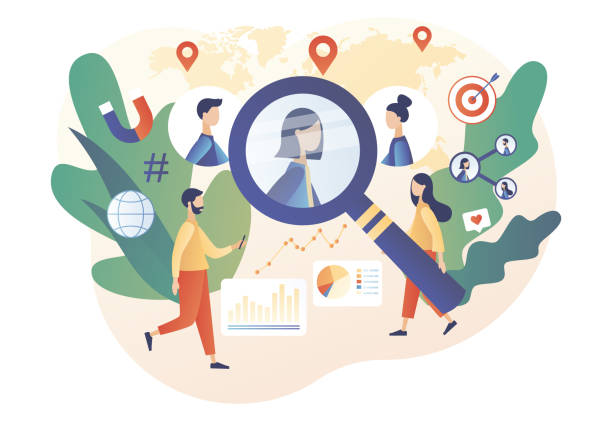Traditional Marketing V/S Digital Marketing
1. What is Traditional marketing
Traditional marketing refers to conventional methods of promoting and advertising products or services that existed before the advent of the internet and digital technologies. These methods rely on offline channels and traditional media to reach and communicate with a target audience.
1.1 Advantages of Traditional Marketing
Traditional marketing has its own set of advantages, and for certain businesses and situations, it can be effective. Here are some advantages of traditional marketing: 1. Local Targeting: Traditional marketing methods often allow businesses to focus on local markets. Local newspapers, radio stations, and community events can be effective for reaching a geographically concentrated audience. 2. Tangibility: Physical advertisements, such as brochures, flyers, and direct mail, provide a tangible and concrete form of communication. This can leave a lasting impression on individuals who prefer physical materials. 3. Established and Trusted Channels: Traditional media channels, such as television, radio, and newspapers, have been in use for a long time and are often trusted by certain demographics. People may find advertisements in established media more credible. 4. Brand Recognition: Consistent and repetitive exposure through traditional marketing channels can contribute to brand recognition. For example, a well-placed billboard or a regularly aired TV commercial can make a brand familiar to a wide audience. 5. Personal Interaction:
Events and sponsorships provide opportunities for personal interaction with potential customers. Trade shows and community events allow businesses to engage directly with their audience, answer questions, and build relationships.
1.2 Disadvantages of Traditional Marketing
1. Limited Targeting:
Traditional marketing methods often lack the precise targeting capabilities of digital marketing. Advertisements in newspapers, on TV, or on billboards are seen by a broad audience, which may include many individuals who are not part of the target demographic.
2. Higher Costs:
Traditional advertising can be expensive. Producing and placing ads in newspapers, magazines, or on television often requires a significant budget. This can be a barrier for smaller businesses with limited resources.
3. Limited Interactivity
Traditional marketing is typically a one-way communication channel. It lacks the interactivity and engagement that digital marketing channels, such as social media or email marketing, can provide.
4. Limited Flexibility and Adaptability:
Making changes to traditional marketing campaigns can be time-consuming and expensive. Once an ad is printed or aired, modifications are challenging, limiting the ability to adapt quickly to changing market conditions.
5. Limited Accessibility to Data:
Traditional marketing methods often provide limited data and analytics. Businesses may have difficulty obtaining detailed insights into the effectiveness of their campaigns or understanding consumer behavior.
6 Environmental Impact:
Traditional marketing often involves the use of printed materials, which can contribute to environmental concerns. The production and disposal of paper-based materials have associated environmental costs.
7. Difficulty in Audience Engagement:
Traditional marketing methods may struggle to engage modern consumers who are accustomed to interactive and personalized digital experiences. Younger demographics, in particular, may be less responsive to traditional advertising.
2. What is Digital Marketing
Digital marketing refers to the use of digital channels, platforms, and technologies to promote, advertise, and engage with a target audience. It leverages the internet and electronic devices to connect with potential customers in real-time. Digital marketing encompasses a wide range of online strategies and tactics to reach, engage, and convert prospects into customers.
2.1. Advantages of Digital Marketing
Compared to traditional marketing channels, digital marketing offers businesses and marketers many advantages. Here are some of the main benefits:
1.Global Reach: Digital marketing enables businesses to reach a global audience. The Internet can expand your marketing efforts beyond geographic boundaries, allowing you to connect with potential customers around the world.
2. Targeted Advertising: Digital marketing platforms offer sophisticated targeting options. Marketers can taret specific demographics, interests, and behaviors to deliver their messages to more relevant audiences, increasing the chances of engagement and conversion
3. Cost: Digital marketing can be more cost-effective than traditional advertising methods. With tools like pay-per-click (PPC), businesses only pay when users interact with their ads. This makes it easier for companies of all financial backgrounds and sizes to engage in effective advertising programs.
4. Measurable Results: Digital marketing allows for greater tracking and analysis of campaign performance. Retailers can use analytics tools to measure key performance indicators (KPIs), such as website traffic, conversion rates, and return on investment (ROI). This data provides insights that can be used to optimize future campaigns.
5. Real-Time Engagement: Digital marketing allows you to interact with audiences in real time. Social media, live chat, and instant messaging provide instant communication channels, allowing companies to address customer questions, concerns, and feedback in real time.
3. Digital Marketing v/s Traditional Marketing
Digital marketing and traditional marketing each have their own advantages, but in many cases digital marketing is preferred for its efficiency, reach and ability to deliver measurable results Here is a comparison of digital marketing:
1. Cost:
- Digital marketing: generally less expensive than traditional methods. Online advertising platforms such as social media and PPC allow businesses to set budgets and target specific audiences, resulting in better spending.
- Traditional marketing: Traditional channels, such as TV ads or print media, can be expensive, especially for small businesses. Production costs, air conditioning time, or space in print publications contribute to higher costs.
2. Target advertising:
- Digital Marketing: Provides highly targeted advertising. Marketers can define specific demographics, interests, and behaviors to which ads are directed to the right audience, improving the chances of engagement and conversion
- Traditional marketing: Traditional targeting strategies are often broad and inconsistent. More media reaches more people, but not all viewers or readers may be interested in the product or service.
3. Worldwide Introduction:
- Digital marketing: Enables businesses to reach a global audience. Online campaigns can be tailored to target specific countries or regions, making it easier for businesses to expand internationally.
-Traditional marketing: There are limited local media such as newspapers and TV channels. Expanding into new markets using traditional channels often requires a lot of resources.





0 Comments